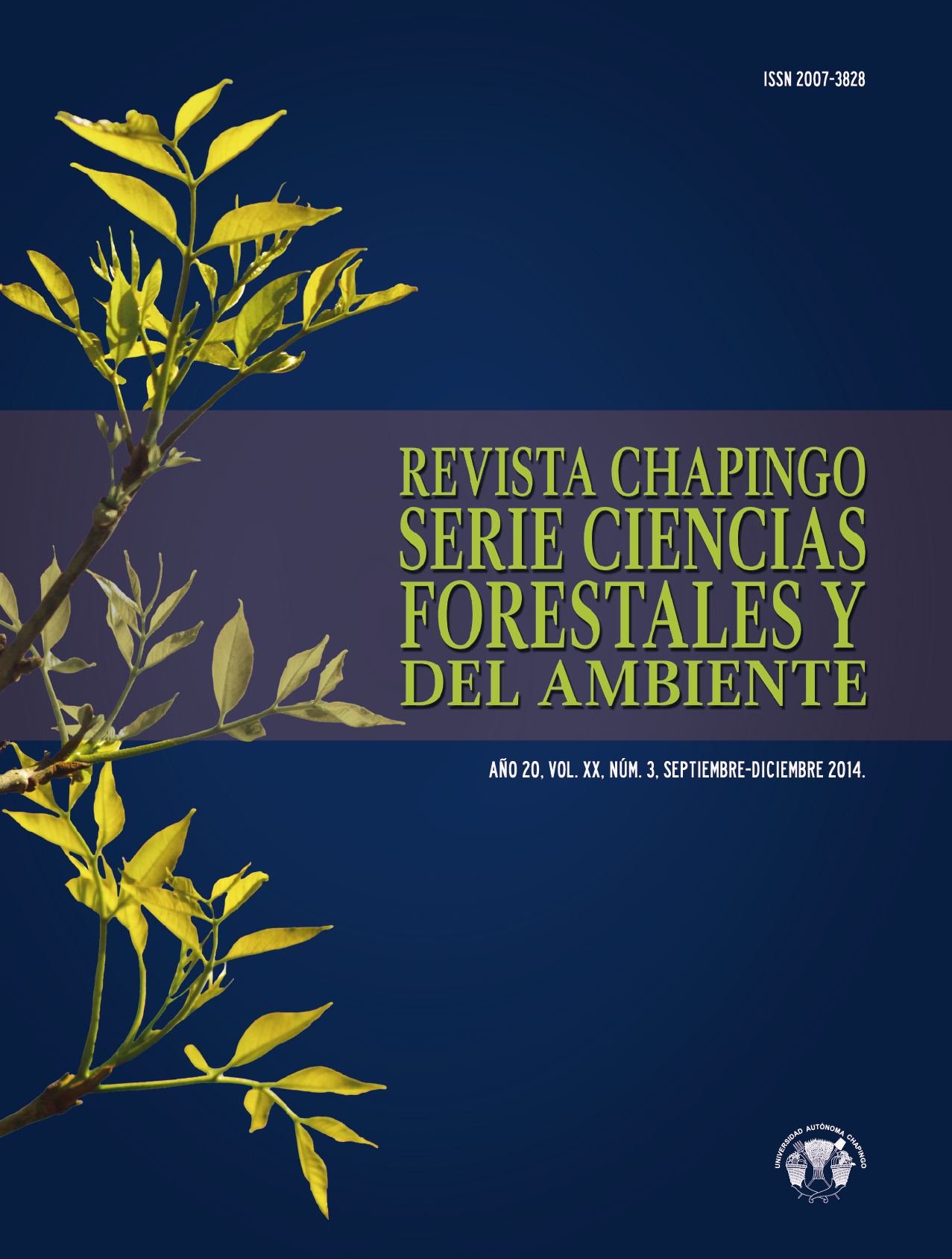Abstract
The potential of the monarch butterfly (Danaus plexippus L.) as alternate host of natural enemies of pests was studied (from March 2012 to March 2013) at a plantation of Asclepias curassavica established at the Chapala Cienega, Villamar, Michoacán, Mexico. Therefore, Phytophagous eggs samples were collected and incubated in Petri dishes for the parasitism record. Results show that D. plexippus was present throughout the year in the study region, with the highest levels of oviposition during August-December. Trichogramma pretiosum Riley was the predominant parasitoid, with levels up to 100 % of parasitism; its major activity coincided with the highest levels of the phytophagous oviposition. Multiple emergences of parasitoids in each butterfly egg contribute to the increase of T. pretiosum populations in field. Therefore, based on this, D. plexippus can be considered an excellent alternate host of T. pretiosum, natural enemy of Lepidoptera pests. In addition, the proposed strategy seeks to contribute to the conservation and increase of monarch populations; both through the preservation of its host (A. curassavica), and by the eventual reduction in the use of insecticides to kill pests.
References
Altieri, M. A., & Letourneau, D. K. (1982). Vegetation management and biological control in agroecosystems. Crop Protection, 1, 405–430. doi: https://doi.org/10.1016/0261-2194(82)90023-0
Ballal, C. R. (2013). Other egg parasitoids: Research for utilization. In S. Sithananthan, C. R. Ballal, S. K. Jalali, & N. Bakthavatsalam (Eds.), Biological control of insect pests using egg parasitoids (pp. 223–227). Karnataka, India: Springer. doi: https://doi.org/10.1007/978-81-322-1181-5_11
Barkin, D. (2003). Alleviating poverty through ecoturism: Promises and reality in the monarch butterfly reserve of Mexico. Environment, Development and Sustainability, 5, 371–382. doi: https://doi.org/10.1023/A:1025725012903
Cano, V. E. (2001). Cría masiva de Trichogramma pretiosum, Sitotroga cerealella y Chrysoperla externa. Manejo Integrado de Plagas, 60, 93–96. Obtenido de http://www.bio-nica.info/Biblioteca/Cano2001CriaChrysoperlaTrichogramma.pdf
Cervantes-Peredo, L., & Elizalde-Amelco, E. (2007). Estados de desarrollo y biología de tres especies de Lygaeinae (Hemiptera–Heteroptera: Lygaeoidea: Lygaeidae). Revista Mexicana de Biodiversidad, 78, 339–350. Obtenido de http://www.journals.unam.mx/index.php/bio/article/view/5335/4861
De Roode, J. C., Chi, J., Rarick, R. M., & Altizer, S. (2009). Strength in numbers: High parasite burdens increase transmission of a protozoan parasite of monarch butterflies (Danaus plexippus). Oecologia, 161, 67–75. doi: https://doi.org/10.1007/s00442-009-1361-6
Ehler, L. E. (1998). Conservation biological control. In P. Barbosa (Ed.), Conservation biological control (pp. 1–8.). San Diego, CA, USA: Academic Press.
Fernández-Arhex, V., & Corey, J.C. (2004). La respuesta funcional: Una revisión y guía experimental. Ecología Austral, 14, 83–93. Obtenido de http://www.scielo.org.ar/pdf/ecoaus/v14n1/v14n1a10.pdf
Fernández, H. J., & Jordano, B. D. (2009). La mariposa monarca Danaus plexippus (L., 1758) en el Estrecho de Gibraltar (Lepidoptera: Danaidae). SHILAP Revista de Lepidopterología, 37, 421–438. Obtenido de http://www.redalyc.org/comocitar.oa?id=45515028003
Ferro, D. N., & McNeil, J. N. (1998). Habitat enhancement and con Habitat enhancement and conservation of natural enemies of insects. In P. Barbosa (Ed.),
Conservation biological control (pp. 123–132). San Diego, CA, USA: Academic Press.
Hoffmann, M. P., & Frodsham, A. C. (1993). Naturals enemies of vegetable insect pests. Ithaca, NY, USA: Cornell Cooperative Extension.
Jacas, J. A., & Urbaneja, A. (2010). Biological control in citrus in Spain: From clasical to conservation biological control. In A. Ciancio, & K. G. Mukerji (Eds.), Integrated management of arthropod pests and insect borne diseases (pp. 61–70). London: Springer.
Johnson, N. F. (1985). Systematics of new world Trissolcus (Hymenoptera: Scelionidae): Species related to T. basalis.The Canadian Entomologist, 117, 431–445. doi: https://doi.org/10.4039/Ent117431-4
Koch, R. L., Venette, R. C., & Hutchison, W. D. (2006). Predicted impact of an exotic generalist predator on monarch butterfly (Lepidoptera: Nymphalidae) populations: A quantitative risk assessment. Biological Invasions, 8, 1179–1193. doi: https://doi.org/10.1007/s10530-005-5445-x
Landis, R. D. A. (2000). Habitat management to conserve natural enemies of arthropod pests in agriculture. Annual Review of Entomology, 45, 175–201. doi: https://doi.org/10.1146/annurev.ento.45.1.175
Malcolm, S. B. (1994). Milkweeds, monarch butterflies and the ecological significance of cardenolides. Chemoecology, 5-6(3-4), 101–117. doi: https://doi.org/10.1007/bf01240595
Morrison, G. (1986). “Searching time aggregation” and density dependent parasitism in laboratory host-parasitoid interaction. Oecologia, 68, 298–303. doi: https://doi.org/10.1007/s00442-014-2995-6
Pinto, J. D. (1998). Systematics of the North American species of Trichogramma Westwood (Hymenoptera: Trichogrammatidae). USA: Entomological Society of Washington.
Querino, R. B., Morales, R. C. D., & Zucchi, R. A. (2002). Relative warp analysis to study morphological variations in thegenital capsule of Trichogramma pretiosum Riley (Hymenoptera: Trichogrammatidae). Neotropical Entomology, 31, 217–224. doi: https://doi.org/10.1590/S1519-566X2002000200007
Reserva de la Biosfera Mariposa Monarca. (2010). Monitoreo de lascolonias de hibernación de la mariposa monarca (Danausplexippus) en la Reserva de la Biosfera Mariposa Monarca.México: Comisión Nacional de Áreas Naturales Protegidas.Obtenido de http://www.conanp.gob.mx/acciones/fichas/mariposa/info/info.pdf
Stouthamer, R., Hu, J., Van Kan, F. J. P. M., Platner, G. R., & Pinto, J. D. (1999). The utility of internally transcribed spacer 2 DNA sequences of the nuclear ribosomal gene for distinguishing sibling species of Trichogramma. BioControl, 43,421–440. doi: https://doi.org/10.1023/A:1009937108715

This work is licensed under a Creative Commons Attribution-NonCommercial 4.0 International License.
Copyright (c) 2014 Revista Chapingo Serie Ciencias Forestales y del Ambiente



